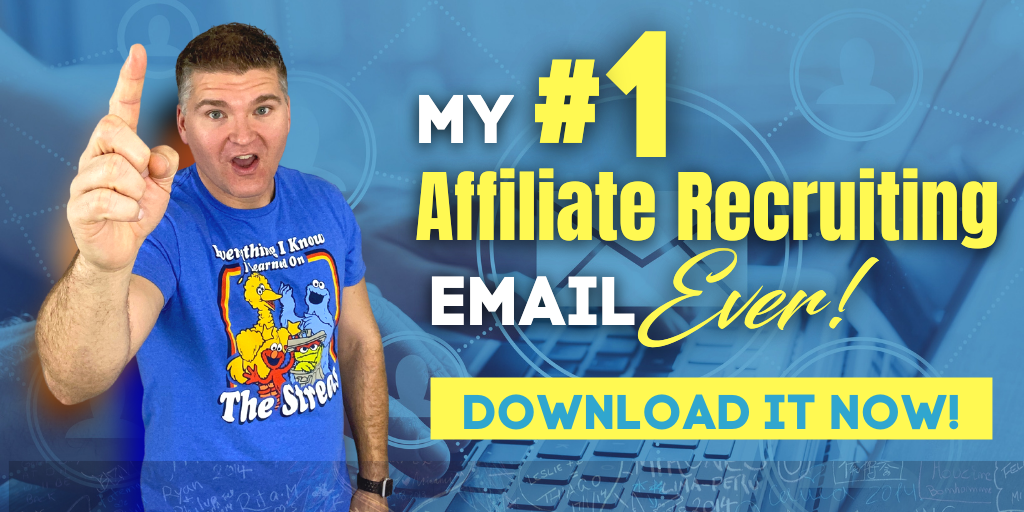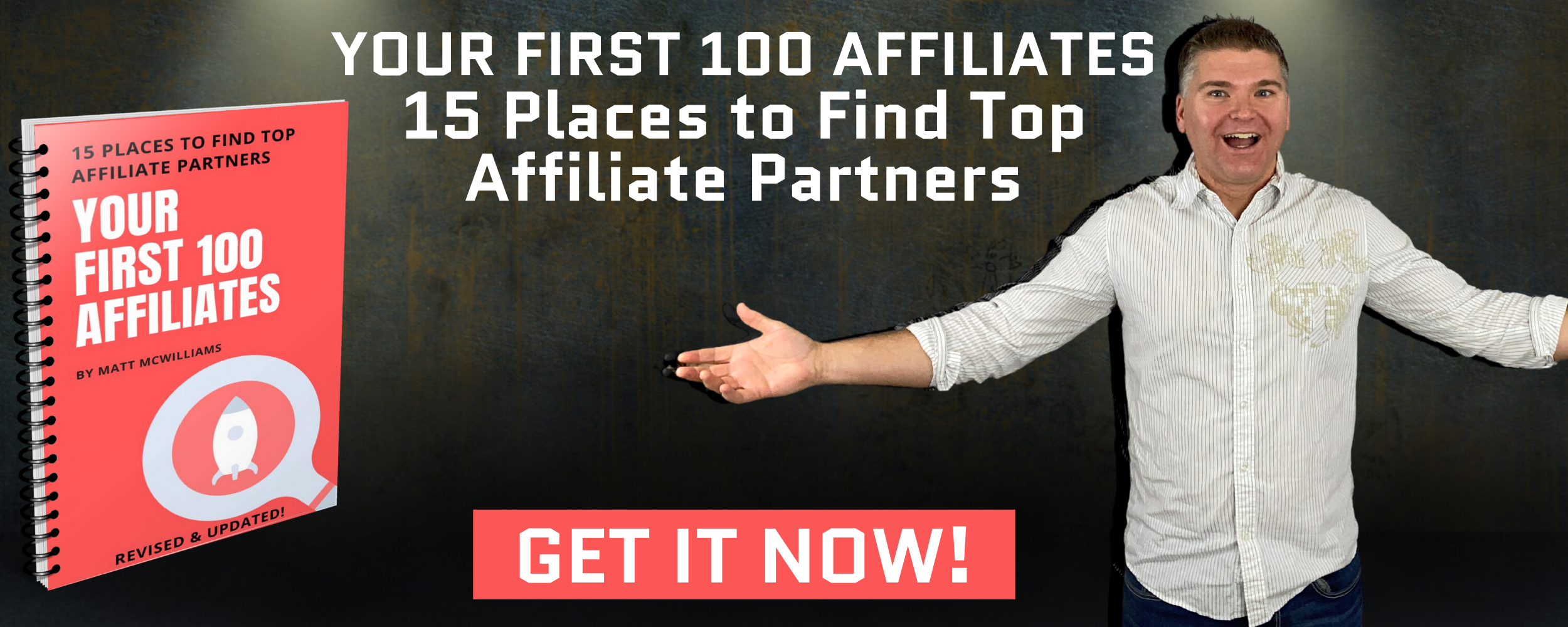Someone asked me recently what are some of the WORST mistakes I’ve made running affiliate programs over the past 19+ years. Narrowing that down was quite the challenge because I have made some REALLY STUPID mistakes, including one that got me SUED by the FTC (more on that in the episode). This episode shows you how to NOT make the same mistakes I did. Listen now and learn from me!
Click Here for The Written Transcript of This Episode
Listen to Part One Here
Don’t Miss An Episode – Subscribe Below
Links/Resources Mentioned in This Episode
PDF Report (Top Affiliate Program Mistakes and How to Avoid Them)
My #1 Affiliate Recruiting Email
How to Determine Commission Structure
How to Create Swipe Copy for Your Affiliates
Affiliate Activation Templates
Facebook Live on Getting Affiliates to Commit
TEXT ME +1 260-217-4619
Previous Episodes of The Affiliate Guy
Don’t Make These Killer Mistakes with Your Affiliate Program (Part 1)
WORST Affiliate Email I’ve Ever Received
Easy Way to Get an Extra 10% from Your Affiliates
How Brenda Ster Did a $90,000 Affiliate Promo With Just 1200 People
The 6 Pillars of Every Great Affiliate Program (Pillars #4-6)
Transcript for Don’t Make These Killer Mistakes with Your Affiliate Program (Part 2)
When I started my first affiliate program 15 years ago, I was totally ignorant about how to run an affiliate program. I made a bunch of mistakes and learned a lot of lessons all the hard way. And I still built the $12.
6 million affiliate program in just two years. In the last episode, I shared the first ten mistakes I made and today I’m sharing mistakes eleven through 20.
So you don’t have to make them. So in the last episode, I shared the first ten of 20 mistakes that I made when I first started an affiliate program.
Actually, these are really 20 mistakes that I made throughout running an affiliate program. Some of these mistakes were when I first started somewhere. That happened a few months in, some of these happened down the road.
But I’ll just run through those real quick and if you missed that episode, you definitely need to go back and listen to it. I waited too long. That was the first one I sent too long of a first recruiting message.
I thought I had to know all of my affiliates. On the flip side of that, I didn’t invest enough in relationships. I didn’t set up the right cookie length.
That was number five. I didn’t work with small affiliates. I was trying to be too cheap with commissions.
I didn’t take the 5 minutes a day to analyze the affiliate data. I forgot the basics as we got bigger and I didn’t invite our customers to be affiliates. Those were ten mistakes that I made.
And today I want to share the next ten, our last ten. Now before I do, real quick, I mentioned in the last episode that you can download a pdf of all these mistakes that also comes with the solutions to what you need to do. So you can make sure that you don’t make these mistakes.
This PDF is an absolute must have for anyone who’s starting an affiliate program. If you want to grab your copy, and I highly recommend you do, just go to mistakes mattmcwilliams.com/mistakes and you can download the whole guide. Like I’m telling you right now, this guide is going to be like one of the keys for affiliate managers of this generation to make sure they don’t make all these same mistakes that I did. I said in the last episode, I’ll say it again here, I got away with these mistakes.
I made these mistakes in 2005 2006 2007 when you could get away with these mistakes and still build more than a $10 million affiliate program that it worked for me. It’s one of those things where it’s not one of like, well, it worked for me, but it didn’t work for you. It won’t work for you. It really is. It really is one of those things. Like, I would not recommend doing what I did at that time.
Need help activating your affiliates? Use my proven email templates for getting inactive affiliates in the game and making sales! Get them here!
I learned through a lot of trial and error and through screwing up a lot of stuff how to do this right. It took me two, three, four years just to figure out how to be decent. I was an affiliate manager of the year until 2010.
I won that award in 2010, five years after I started. That’s how long it took me to get really good at this stuff. And truthfully, I don’t think I peaked.
I don’t think I peaked until about 2017 or 18. I’m saying I peaked and I’ve gone down. The reality is there’s only so much I can do to get better now.
I’m really good at this stuff. Admittedly, this is my thing, but it took me like over ten years just to be able to get to that point. You don’t have to wait that long.
That’s the cool thing because you don’t have to go through all the trial and error. You get to learn from me on these podcasts. So make sure that you’re the first to grab that pdf.
Mattmcwiams.com/mistakes so you can avoid all 20 of these.
I’m going to tell you right now, if you don’t get it, your competition is and they’re going to be laughing at you. Just throw that out there anyway. All right, so let’s talk about mistake number eleven.
Mistake number eleven was not getting out there, not going to conferences, not really meeting with affiliates one on one, personally for years, I was really elusive. In fact, it was kind of a joke. It was almost like, what is that, a badge of honor?
I was like a mystery. I was elusive like I was the mythical affiliate manager. People had, they had emailed with, they’d even talked to on the phone and maybe even seen on video, but they never actually met.
I mean, literally, from the time I started my first affiliate program in 2005 until through the next ten years, I attended three conferences. Three. Even when I went to the conferences, I got there 5 minutes before it opened and I left when it closed and I did my thing, I barely hung out with anyone.
That just wasn’t my thing. So even in 2010, when I won my first affiliate manager of the year award, and then the next year when I won my next one, two years later when I was nominated but didn’t win, and then when I won another one sometime after that, I didn’t go to the ceremonies in person. I literally had to find out from other people.
I got text messages, hey, you won. That’s how I found out. I also wasn’t on social media.
I rarely interacted with our affiliates outside of that professional setting, and so this led to really bad relationships. My relationships were more transaction based than they were personal. I didn’t know a lot about my affiliates.
I didn’t even know if they had kids half the time. So don’t be elusive, don’t be 100% professional like I was. So today I’m constantly interacting with our top affiliates.
I’m constantly interacting with our ideal affiliate prospects. So what you should do is you should attend industry conferences. Attend.
When we get back to that, right now, as I’m recording this for those listening in the future, I’m recording this in the middle of the Covid-19 pandemic. And right now there are no industry conferences, but there will be attend them virtually and participate in the chat. I make it a point when I go to a virtual conference to be seen in the chat.
Get active on social media with not only your current affiliates, but your prospective affiliates. Develop these genuine relationships with them. Right.
Know their kids names, know their spouse’s names or name, know their favorite teams, know where they went to college, know that way, if they’re like one of our top affiliates, he’s a Kansas City Chiefs fan. When they won the Super bowl this year, I reached out to him, to Matthew Loomis, and was like, dude, congratulations.
I’m so happy for you. I was rooting for the Chiefs just because of you, also because they were playing the 49 ers, but develop friendships with them, right. If you know that they went to college somewhere and their team wins a championship, congratulate them.
If you know they live in. I know where our affiliates live, and so when there’s an earthquake, I make sure they’re okay. When there’s a tsunami that hits there, I make sure they’re okay.
Develop those friendships that go beyond just a professional relationship. So don’t do like I did, don’t be elusive and don’t be a mystery. Definitely don’t wear that like a badge of honor.
Number twelve is I delegated my communication. So as our affiliate program grew, as it got bigger and bigger, once we hit the mark where we had about 200 affiliates and as our business grew. I just got really busy.
I was also a chief operating officer of our company. I ran our quality control department, and I was also responsible for a few of our bigger outside accounts just because I had had those from when we started the company and I had the relationships. And so I spent 4 hours a day, 5 hours a day on those things, which left.
Now, granted, I was single at the time and I had no life outside of work, so I was working 12 hours a day, six days a week. But still, it left me with only about five or 6 hours a day to have anything to do with affiliates. I was also involved in leadership meetings and just overall strategy in the company.
And so I had to delegate a lot of my responsibilities as affiliate manager. I had to. I just didn’t have a choice. While this was necessary. Right. I made the mistake of delegating some things that I shouldn’t have, such as a lot of the communication with affiliates. And I am don’t do this. That was one of the biggest mistakes I made. You can delegate.
Reviewing the stats, I mentioned that in the last episode that I eventually just got to the point where I said, hey, I need you. I need my assistant to review the stats and just tell me anything I need to know. It took 90 seconds a day. That’s it. You can delegate creating swipe copy. You can delegate setting up the affiliate portal.
You can even delegate some of the affiliate training. But you should never delegate important communication with affiliates. If you’ve done what we talked about already, you built those relationships, then they need to hear from you.
I’ll tell you right now, an email or a text or a Facebook message from you will get five, maybe ten times the results of the same message from your assistant or somebody else on your team. So make affiliate communication a priority for you. Here’s a simple way to do that. This is what I did.
Just dedicate 30 minutes every single weekday to reaching out to individual affiliates. This is your time to reach out to individual affiliates. No more. You don’t have to do more than that.
That’s it. And so it might be in a given week what that might look like is I have two calls that last 30 minutes. Some sometimes I’ll go longer, but I go for walks when I’m on calls so it’s not a big deal. So 230 to 40 minutes phone calls, 130 minutes session where I’m just sending out emails and then 130 minutes session where I’m replying to emails and then the fifth day is kind of like a hodgepodge.
I’ll send a few text, I’ll reply to a few emails, I’ll shoot a couple of Facebook messages, I’ll just go engage on social media with them. I’ll make it really like, hey, I’ve got 15 minutes on my calendar. I’m going to be really intentional. I’m going to go to Facebook, I’m going to go to Twitter.
I have a Twitter list of people that are just affiliates. I prioritize those over everybody else. I prioritize in order current affiliates followed by prospective affiliates. So 30 minutes a day every weekday just to reaching out and engaging with your affiliates and then 1 hour a week for mass communication.
If you do nothing else like those three and a half hours a week, you will be successful. It’s not how you’re going to grow to start with, but when you’re finding it hard, if you do three and a half hours a week, I promise you, you can run a successful affiliate program. So number twelve was delegating my communication. That was a huge mistake.
Number eleven was not getting out there and just being a part of the world. Number 13 was I would go months at a time without recruiting an affiliate. Not just a quarter, but I might go like four, five, six months and not bring on a single new affiliate of my own. Actions like I might get one referred to us or somebody would just sign up, but I wouldn’t go out there and actively recruit affiliates.
And so you think back to when I first started, when I first heard about affiliates, I shared that story like we’re sitting there in the office and we don’t have any money and it’s like, oh my gosh, we need affiliates. I spent five or 6 hours a day recruiting affiliate. It consumed me. I still had those other responsibilities but those went on the back burner.
I did those as fast as possible. I’d have like two or three sales calls and I’d have to work on a blog post and update something and meet with the team and that would take 4 hours. And I spent the entire rest of my workday doing nothing but researching affiliates and reaching out to them. It was all consuming.
Even we had like 30 affiliates. Now, naturally, as we hit 50 affiliates, it became 80%, and then as we hit 100 affiliates became 70%, and as we hit 200, I basically was recruiting almost none. And that’s one of the common growing pains with affiliate programs. Like you reach the point where managing your current affiliates is taking up so much of your time.
And if you have other responsibilities inside your company, like I did, it feels like you have no time to recruit affiliates. And so I would go months without recruiting new affiliates. And so the fix for this is ABR. Always be recruiting, continuous recruitment.
And so there’s this concept. In fact, I was sharing this on a Facebook Live earlier. There’s this concept called the 20 Miles March, and I forget which book it’s from, but it basically refers, if I’m not mistaken, to the two missions to get to the South Pole. I don’t know all the details, but one of the missions was like, they would go like 30 miles in a day and then eight the next day, and they would go less if the weather was bad, more if the weather was good.
And what they were doing was they were like, passing their camps. So if they went 30 miles, now they’re in between these camps that have all their supplies and all these things and the successful mission, they went 20 miles. If it was beautiful out, beautiful for Antarctica, at least if it was nice outside and they could easily go 35, they went 20 and they just rested more. And then the next day when the weather was terrible and the wind was blowing, 60 was negative 800 degrees or whatever, they’d still go 20 miles and it might take them 18 hours and they’d be exhausted, but they went 20 miles.
And so the version here that you want to do is what I ended up doing, which is just commit 20 minutes every single day, defining new affiliates. Put it on your calendar as an appointment. This is the key. Don’t go, I’m going to go gung ho.
I’m going to do an hour today and then you don’t do it for like four days, right? No, 20 minutes a day consistently. I still remember the time every Monday through Friday, 835, 835 AM.
We had a leadership stand up meeting at 09:00 a. m. . I would usually get to the office about 810, 815, walk around, talk to people, just interact with our team, get some water, all the things I need to go to the bathroom, all that stuff. And then I would sit down at 835, well, stand up. I would stand up at 835. I was already standing up. I could even get on the treadmill and do it, and I’d do 20 minutes.
I would literally set a timer, and that timer would go off at 855. Just enough time to go take a bio break and go to my leadership meeting at 09:00 it was on my calendar, though, so nobody would ever try to schedule anything else. I would never have a call then or any type of thing then. And I think probably out of 100 Monday through Fridays in a row, I did it 98 days. Occasionally I’d have something I had to go do on a personal thing that would get me into the office late. But every day, 08:35 a. m. That’s it, three or four.
I’d research them, find some stuff. Sometimes I might only get reach out to one, but I’d reach out to some number every day for 20 minutes a day. And that’s one of the things that helped us grow when we kind of stalled there for a while. After about six months or so, we really stalled.
We were doing about a half a million dollars a month, and we did a half a million dollars a month for like five, six months, in part because I wasn’t bringing on any new affiliates, and that was what kind of helped. Then all of a sudden, we were doing 600,000 a month, 700,000 up past a million a month. So make sure you’re doing continuous recruiting. Always be recruiting.
AbR mistake number 14 is I removed inactive affiliates. That was a really bad idea. It’s just bad form. It’s just bad form.
And the thing is, it’s common. It’s common to have inactive affiliates. And the downside to this, the reason why you shouldn’t do it, is that just because somebody signs up and they don’t promote for even a year, doesn’t mean they never will. In fact, we’ve seen examples of this when affiliates have just been completely inactive and then they’ve suddenly just sprouted up out of nowhere, not even, like, doing some of the stuff.
Get my #1 affiliate recruiting email (the one I’ve personally used to recruit thousands of affiliates in dozens of niches). Grab your copy here!
I’m going to share here. And boom, they’re active. And so what I want to share with you here is I want to share two strategies, or actually a few strategies. For each of these two examples, I want to share how to activate your inactive affiliates.
If you’re in a launch so you’ve got a compressed, like 17 day timeline, then I want to share what to do if it’s evergreen. The thing is, most of the time, the reason why somebody’s inactive is they just got busy, especially in launches. They just got busy. They got busy with other work, they got busy with their kids.
They got sick. In other words, life got in the way. And all they need is a gentle reminder. And when they come back for whatever kept them from promoting, they have a mound of email, they have calls to return, they have posts to write, they have videos, podcasts to records.
They aren’t thinking of you. Like, no offense, it’s just not high on their priority list. And so all it takes is that gentle reminder gets them fired up again. And so we’ve run these activation campaigns like Shutterfly.
We got 1400 affiliates who had Nearly a half a million dollars in additional revenue in just like a few weeks. Just from. We got 1400 out of 15,000 inactive affiliates, almost 10% of them. This is in a massive affiliate program with MicHael Hyatt.
We activated. We had 944 affiliates, this is in 2016, who had not yet sent traffic after the first week of a launch. Three days later, 291. So 30% of those 944 were sending traffic. Those affiliates produced $104,000 in sales. This works. This works. So how do you know if somebody’s inactive?
Like, what qualifies as inactive? Um,For us, it’s basically anybody who’s just not sending traffic. Now, we usually set the threshold at like three clicks, four clicks. We’re not looking for the people who are sending just a couple of clicks a month.
That’s probably just that. They have small traffic. They have a tiny blog that gets barely any visitors. And okay, that’s fine. But we want to look at around three because maybe they tested their link it. And so we typically want to go about three.
We’ll do three. And so what we’ll do in a launch, again, this is in a launch, like a product launch, formula style launch. It lasts like 14 to 21 days. The average time is 17. 2 days.
Typically we’ll reach out right after Plc two. So right after the pre launch content, and again, if you run an evergreen affiliate program, I’m going to share that in just a moment. So typically, like day one will be plc one, day two will be plc, or day four will be plc two.
We’ll reach out on day five and then day eight would be plc three. We reach out again on day nine and then we’ll reach out like the day after cart, open to the inactives. So that gives them plenty of time to get active, not being annoying.
We want to balance being proactive with being annoying. And so we got three times, got three times in. And the thing is, make sure you reach out at least three times.
Just space them out a few days apart. Don’t worry about being annoying though, because it’s not like they can send you any less traffic, okay? It’s not like they can send any less traffic than they already are.
And so as far as how you reach mean, you use any means necessary, like email, text, voxer, Skype phone, Facebook, messenger, tweets, smoke signals, send a carrier pigeon, I don’t know. Send them an overnight thing in FedEx if you really think it’s worth it, right? Just learn their preferred method of communication. Just learn it. Whatever method they have. Like if they like chatting on Skype, shoot them a Skype message.
If they like a text, then text them email if you don’t know, usually works. And so what you do, I’m going to give you this here real quick, is reach out to them. I’m going to give you a sample email because 95% of your communication is going to be via email.
And you just send them a simple email, everybody with three hits or less. And you just say, hey, everything okay, Joe? Everything okay? To their first name and then just say, hey, Joe. Just making sure everything is okay. I had you down to support such and such, but I haven’t seen any activity yet.
There’s still plenty of time to get in. Plenty of time to join. The launch is going amazingly well, but it’s not too late for you to get started. Let me know how I can help. That’s what I’m here for. All the know, whatever your name is. Right? And the thing is, this has five elements. These are the five important elements to this email.
Number one, it grabs their attention. When you see a headline or a subject line that says, everything okay, Joe? And your name’s Joe, it stands out in your inbox. Right? Number two, it reminds them of a commitment. If you’ve read Robert Cialdini’s book influence, there’s almost nothing as powerful as the principle of commitment.
We have a natural desire to do what we said we would do. So you want to remind them of that commitment. That’s why I say I had you down to support such and such, right, but I haven’t seen any activity yet. Thirdly, it encourages them. Twice in this email, I say there’s still time. I say there’s still plenty of time to join.
Boom, boom, boom. The launch is going amazingly well, but it’s not too late for you to get started. So it encouraged them. It encourages them. Like by the time you hit day five, they might think it’s too late to join, but I make sure to tell them otherwise. Fourth, it has the social proof, right?
I mean, people want to be a part of something successful, and so I make sure to point out that things are going great and I want them to be a part of it. And then fifth, it offers them help. You’re here to answer questions. You’re here to hold their hand. So this is just one of our best activation emails that we’ve used. We’ve literally tested more than 300 of these over the years.
So if you want to get all of my best activation email templates, we’ll include a link in the show notes to get those. So what about evergreen programs? If you have an evergreen program, why are affiliates inactive and what can you do about it?
So I’m going to just share a few reasons real quick. Why would somebody be inactive? And it’s important to understand the exact reason as that’s going to determine the best approach to take to activate with them.
Reason number one is they just signed up on a whim. This happens a lot, right? Like person a sees person b promoting something, they sign up and then they realize it’s not a good fit for my audience, I don’t have an idea, I don’t know how to promote this, or I don’t have time. Right. With this group, there’s not much you can do. If you find someone just mistakenly signed up, just remove them and move on.
That is the right thing to do in this situation. And number two is they’re promoting a competitor. Now, this one hurts. Like, the reality is no matter how awesome your product is, how great the commissions are, sometimes people are going to go promote something else. There’s only really a few reasons why somebody would do this. The new offer converts better, the new offer pays better.
The new offer has better tools for their affiliates, or there’s a promise of a reciprocal promotion where they say they’re going to promote me. And if you think about it, if I can make $10,000 promoting you or $10,000 promoting them or even $9,000 promoting them or even $8,000 promoting them and they’re going to promote me, let’s just say I make $2,000 less promoting them and they promote me and I make $10,000, well, then I have $18,000 instead of ten. It’s important to understand why they switched to the competition, though. You want to find out these things. You want to find out these things.
Number three is they might have gone out of business. Again. There’s not much you can do here. The fourth reason is they don’t know how to promote. Sometimes they just don’t know what to do. And your job is to help them.
Your job is to help your affiliate succeed. So you got to do all the things that we’ve been talking about, like hosting, training webinars, recording videos, getting on calls with them, creating promo, the commitment plans that we talked about. Right.
Your job is to help your affiliates. And then the fifth reason, a lot of times we find, is they’re going to get around to it later. Now there’s two types of get around to it later affiliates, just like there’s two types of get around to it later people.
Type one, which accounts for 0. 3% probably, of they truly have it on their calendar in the future. In fact, they’re like, let me take a look at my promo calendar. Yes, I’ve got you on my calendar for September 7 through twelveth. The second type of person, which is 99.
8, whatever percent, 87% is, they’re never going to, quote unquote, get around to it unless you give them a nudge. And if you remember what I said about launches, usually all it takes is a gentle reminder, and they’re never going to take action unless you give them that nudge. So give them that nudge. Reach out with that email. Grab these activation templates.
Now if going back to the one where they’re promoting a competitor, if the issue is about conversions, then you need to find out what the competition is doing to beat you. So help them optimize their campaigns to convert. Better work on your sales funnel.
Get your conversions up right. If the issue is like the affiliate tools, while they’re promoting the other person because they have better graphics, they have better copy, they have better tracking, then fix those things right. Get them what they need and tell them that you listened.
Tell them that you listened. If the issue is a commission structure, we talked about this in the last episode. If you want to check out the video about how to structure your commissions, I’ll put a link in the show notes to that video.
Again, if you’re just being cheap and someone else is beating you, stop being cheap. Simple as that. If the problem is that you can’t do a reciprocal promotion because that’s what they, hey, they promised doing your reciprocal promotion, then maybe reconsider your stance.
It might be worth promoting them to keep them. Consider other alternatives. Like, for example, if you can’t promote them, but you can get somebody else to, and you can kind of do like a three way, I’ll promote you.
If you promote them and they promote you, that kind of thing, that might work. Consider promoting them without actually promoting them to your entire list. I can’t promote them. Like, first of all, my list is like four times bigger. Okay, how about I promote it to a segment of my list? How about I promote it to just my buyers? If it’s not a good fit, how about I just go spend $3,000 on ads and send them a bunch of really good qualified traffic? I can do that. I can go run ads.
Yeah, I’ll go spend $3,000. I’ll make $5,000 in commissions. Well, I mean, first of all, that’s a money maker and you get to keep them as an affiliate. So consider some of those alternatives so you don’t lose these affiliates. Now, I went really into depth into that one about how to not remove inactive affiliates.
You want to reengage them. It’s so important. That’s where a lot of your money is going to be made. All right, back on track here with number 15. I did not create individual affiliate plans. Now, I just talked really in depth about this on a Facebook Live that based on when this podcast is going live, we would have done the Facebook live the day before.
So yesterday, when you’re listening to this, it would have been what was on Thursday, May 21, 2020, in the middle of the pandemic, we talked about this. So I’m not going to go super in depth here, but if you want to get a template of how to do these promo plans, even though we call them commitment plans, and that’s a whole nother thing, go watch the Facebook Live. I’ll include a link to, it’s mattmcwiams.com/may21. But not creating these individual affiliate plans really kept us from growing. It was a huge mistake.
So go check out the Facebook Live. I share seven ways to make sure that your affiliates go all in that they commit to promoting you. And one of the big ones, the very first one I share, is creating those individual affiliate plans.
So I encourage you to go see that you can get a walkthrough of how we do that. Mistake number 16 was not giving affiliates specific promotional strategies. Now, this kind of ties into the last one, but it basically was like we offered a one size fits all promotional strategy. That’s not the way to do it. Every affiliate has their own stuff going on. They have their own calendar.
Just because you’re releasing video one on Tuesday doesn’t mean they’re going to mail about it on Tuesday. Is there a way for them to mail about it on Monday to give their audience early access? Because they can’t mail on Tuesday or Wednesday and they don’t want to wait till Thursday.
So what can you do for them? See what you can do for them. Can you offer them an exclusive coupon? Can you offer them an exclusive bonus or exclusive access? Exclusive images even? We’ll talk about more about that in the creatives that we’ll talk about in a moment.
What about exclusive messaging? Is there something that you can offer them that’s specific to them? Can you do this for all your affiliates? Of course not. Can you do it for your top ten or 20 or 30 even? Of course, you can give them something that works best for their audience.
Be willing when they come to you and say, hey, Matt, my audience is stay at home moms. My audience is 50 year old plus men. My audience is executives. And you go, that’s not our perfect target audience, but I see how that works. Let me help you with some messaging. Be willing to do that.
And the cool thing is it allows you to expand. It allows you to get other affiliates who are similar, and they see how tight their messaging was, and they’re like, wow, that’ll work for my audience, too. And now you have the copy, you have the swipe copy, you have the images, you have the messaging around that specific niche.
So work with them on those specific promotional strategies. Number 17, the 17th mistake, it’s a lot of mistakes, man, is we did not have enough entry points. And so this is a mistake that I made, not with my very first affiliate program, but actually with some of the other ones we ran later where we had plc, one, two, and know so prelaunch content, like a video, one, two, and three.
We had a webinar, we had a sales page. So there were five entry points. That was it. In retail, you might have, like, your home page, your order page, and an information page and one other page. Right. What we discovered, we did a study a while back, and we looked at the data points on the difference between, specifically, what we were looking at is the difference between launches that were five to 10 million and launches that were twelve to 17 million.
Okay. So we kind of left out those ones in the middle just because we wanted there to be a little bit of a gap. So what’s the difference between a five to $10 million launch and a twelve to $17 million? And if those numbers intimidate you, don’t let them. This is all about the lessons, right? This isn’t about, oh, I’m never going to run a $14 million launch.
Who cares? Yeah. The difference is this is also the difference between a $1 million launch and a $4 million launch. It’s also the difference between a $100,000 launch and a $400,000 launch. One of the biggest things we’ve discovered, outside of the obvious things like their registration pages, were more optimized their webinar process. They used multiple ways to get people to show up to webinars and things like that.
One of the ways that you can easily control one of the biggest differences we discovered was number of entry points. Eight figure launches had 75% more entry points than seven figure launches. So notwithstanding conversion rates, number of affiliates, number of big affiliates, commissions, contests, any of that stuff, number of entry points.
So instead of just three videos, a webinar and a sales page, they had three videos, three pdfs, two different webinars for two different audiences. They had an assessment, they had a quiz, they had another free report. They had this and they had that. They had 11, 12, 13 entry points. And you want to offer your affiliates as many etms, excuses to mail excuses to promote etps as possible. When you only give them three, they’ll do three.
When you give them seven, they’ll do seven. They give them eleven, they’ll do nine or ten. They might not do all of them, but it allows them to pick which ones are going to work best for them. So mistake number 17 was not having enough entry points. Mistake number 18, not policing our affiliates. Yes, on occasion there are bad players.
I’ve worked with 300,000 plus affiliates. I’ve probably worked with 50 bad ones where they were doing something nefarious, they were doing something to hurt the brand, they were doing something that was illegal or unethical or immoral. In fact, I’ll just go on a limb and say it will happen at some point.
So you want to monitor this stuff. You want to make sure that your affiliates are compliant. You want to make sure that they’re following the FTC guidelines. You want to make sure they’re disclosing that they are an affiliate. You want to make sure that they’re not doing anything unethical or illegal. And we got away from doing that for a while, and it got us in trouble.
I have been sued by the FTC now. They ended up doing nothing with me. They dropped the lawsuit because I wasn’t doing anything wrong. We had made a mistake in 2010 when they first passed their new guidelines, and we didn’t police our affiliates as well as we were supposed to have. We made every effort to, and we showed them that, and they went, oh, you actually did. You did make good faith efforts to try to get your affiliates to comply.
But some of our affiliates were still not compliant, and we missed it. And so that’s not what I’m talking about. The reason we were sued initially by the FTC was because one of our competitors reported us, and it turns out the thing he reported us on was totally bogus.
He reported us for having an affiliate that didn’t disclose they were an affiliate and they weren’t an affiliate. They were just promoting know because we were friends with the owner and it was totally free, there was no financial transaction and he got all up in a tizzy. He went out of business two years later.
But anyway, not that I’m like rubbing that in or anything, but he reported us and when the FTC investigated it, they also found that we had some affiliates who weren’t reporting, weren’t disclosing. So make sure you’re policing your affiliates. Make sure you’re keeping track of those things.
This is not something that should take more than five or ten minutes a week at the most, okay? It’s also just good business to be on their list, not just to police them. One of my favorite things to do is to get an email from an affiliate that’s promoting me and then respond to that, send it to their personal email, send it to their gmail and be like, dude, this email is awesome.
Keep it up. That’s it. That little bit of encouragement could be worth thousands or tens of thousands of dollars to us. Little thing, right? But I’m not going to get that email if I’m not on their email list. So mistake number 18, though, is not policing your affiliates.
Mistake number 19 is not providing the right creatives. You cannot just give affiliates a couple of pieces of swipe copy. You cannot. I mean, email is important. So you want like, check out my guide to creating great email swipe copy. We’ll link to that in the show notes.
But not only do you want just some swipe copy, you want different versions of swipe copy. Different audiences, as we talked about. You want a short version of swipe copy and a long version of Swipe copy. You want text links, you want banners, you want social media creatives for all the major channels, which is constantly changing.
You want coupon creatives if you have coupons. You want social media text, you want headshots, you want action shots. Like if you’re the product creator, you want some head shots of, you want some action shots of you doing, you want some videos, right?
All those things. So make sure you’re providing the right creatives. Don’t get lazy on this. Give them a lot of options so they have what they need. I love it when it takes me an extra three minutes to find something because they gave me like 37 options. I love that as an affiliate.
So mistake number 19, not providing the right creatives. And lastly, but not leastly, leasy, I made that up. Whatever. Not communicating with our affiliates between launches. Not communicating with our affiliates between launches. Now this is only relevant if you have a launch or a big promo.
Let’s just say maybe you don’t have launch, you have an Evergreen program, but you do like a big discount every quarter or you do like a big bonus every quarter. You do something about every 90 days. And those are great.
You want to do those with evergreen programs. If you have a launch, if you have a once a year launch or a twice a year launch, what do you do in between those things? So we just used to go dark.
We wouldn’t communicate at all. Like dumb and they just forget who. And then we come out like four months later and be like, hey, you’re going to promote us again. No, I’ve moved on. So keep in touch with them. One of the best ways to do that is just like every couple of weeks, send them something.
Send them an update, send them money, send them their commissions. So when you send your commissions, make sure you include a note that says, hey, reminder, our next upcoming promotion is boom, boom, boom. Are you in?
If you are ready to take your business to the next level and start an affiliate program, start with my free report, Your First 100 Affiliates. This report takes nearly two decades of experience, trial and error, and lessons learned about finding top affiliates in nearly every conceivable niche and puts them all into one report. Grab your copy here!
Send them an email once every two to three weeks. Post in the affiliates group on Facebook once every couple of weeks. Just post a quick video.
So if you do a once a year launch that last two weeks, the four weeks before that are pretty self explanatory, you’re going to warm them up and we won’t go into that. What do you do the other 46 weeks of the year? What I recommend is about two weeks after the launch ends, you post and share some testimonials and do it again about four weeks after and about six weeks after just share the amazing results people are getting.
So that’s six weeks right there. What do the other 40 weeks look like? Well, about every eight weeks.
About five times in those 40 weeks, I would do something like that. I’d send in an email, post in the Facebook group, sharing a story from people who are using the product or have gone through the course. Those are great ways to keep in touch with your affiliates.
I would constantly remind them of the dates of your next upcoming launch. I would send them behind the scenes. Like if you’re recording the course, send them behind the scenes, show them what it’s like behind the scenes.
Tell them about any changes you’ve made. I would start reminding them again of the dates and any promotional strategies you’re going to use and giving them early access to the affiliate portal and promotional materials, creating those plans that we talked about. These are all things you can do throughout the year to keep in touch with them.
Share a tip with them, share an article you read or an article you wrote or a video you shot with a promotional strategy. Share something you learned promoting something as an affiliate. These are all things you can do to keep your affiliates engaged. So there you have it. All 20 oh my gosh. Feel like I’ve screwed this up.
All 20 mistakes that I feel like we’ve made and we probably made a bunch more, but all the big ones that we’ve made over the years, but also what we’ve learned from and how to do it right. So I hope these two episodes have served you well. I hope they help you not make these mistakes and will help you to absolutely rock your affiliate program.
That’s what I’m most excited about. So I want to hear from you. Let me know how these episodes are helping you. Shoot me an email. Just email podcast@mattmcwiams.com and let us know how these episodes are helping you. Make sure to grab that pdf of the mistakes so you don’t make them. Go to mattmcwiams.com mistakes.
That link and all the links I’ve mentioned in these episodes will be in the show notes. So go check that out as well. They’ll be right there in the show notes. You can click right over to them.
And if you haven’t yet, make sure you leave us a rating and review. We love to hear from you again how you’re listening to this podcast and what you’re getting out of it, what you think of it. We love five stars. Leave a rating, review. It helps other people to find us here as well. So with that we’ll wrap up. And I cannot wait. I got something really cool, man. I’m so excited about the next episode.
Not going to tell you what it is, but it’s going to be absolutely amazing. We’re going to talk about a little bit that we learned from our best affiliate promotion ever. I’m going to let you in on a couple of little secrets that I sort of teased by accident. I wish I was that smart in this episode. So with that, I will see you in that next episode.
Questions?
Text me anytime at (260) 217-4619.
Or…check out some of my free reports to help you get on the right track:
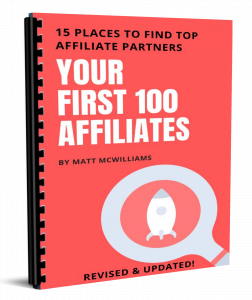 |
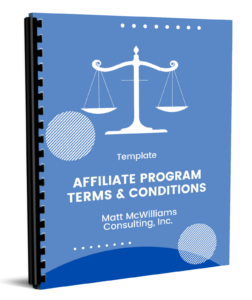 |
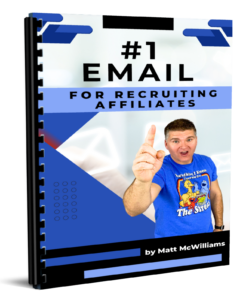 |
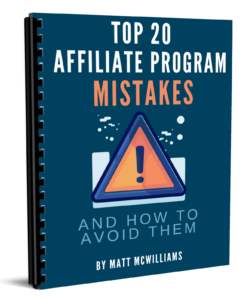 |
 |
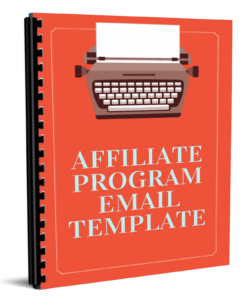 |
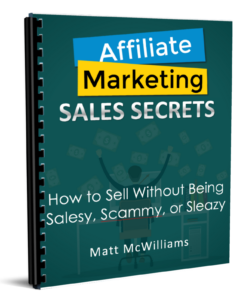 |
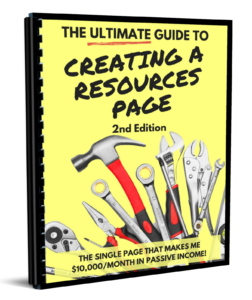 |
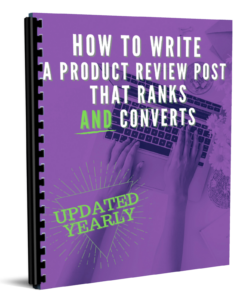 |


